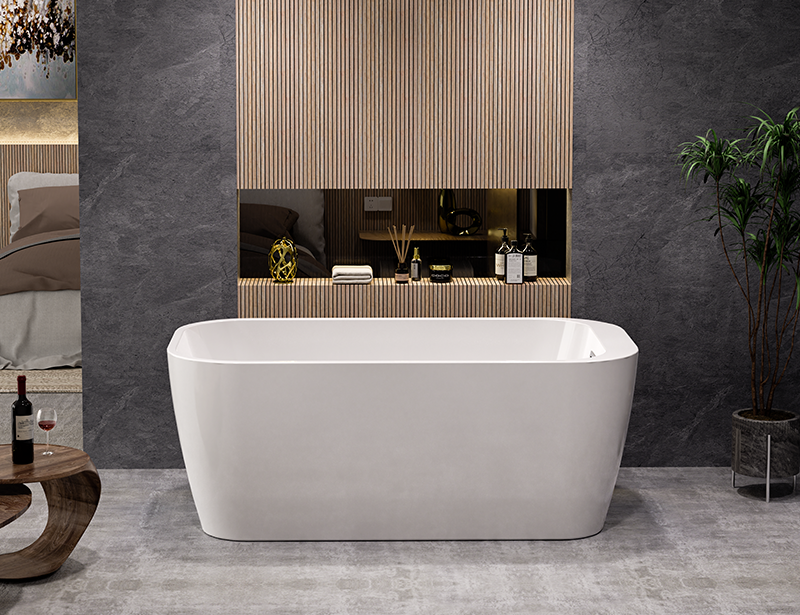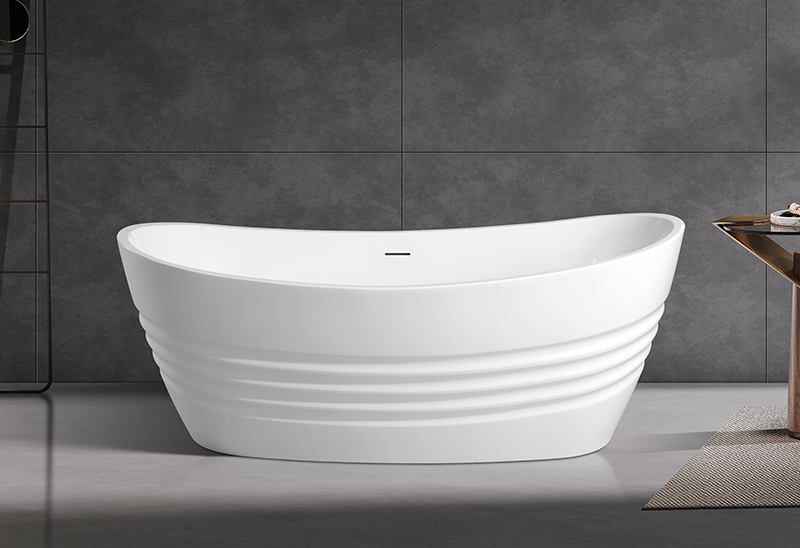Drop-in bathtubs are available in various materials, each with its own set of advantages and disadvantages. Here are some of the most common materials used for drop-in bathtubs:
Acrylic:
Pros: Lightweight, affordable, easy to clean, retains heat well, available in various shapes and sizes, good insulation properties, and can be molded into different designs.
Cons: Susceptible to scratching and fading over time.
Fiberglass:

Pros: Lightweight, affordable, easy to install, good insulation properties, and resists stains and scratches.
Cons: Less durable than some other materials, may develop surface cracks or chips over time.
Cast Iron:
Pros: Extremely durable and long-lasting, excellent heat retention, resistant to scratching and chipping, adds a classic, luxurious look to the bathroom.
Cons: Very heavy, may require additional structural support, can be expensive, and may lose heat quickly if not properly insulated.
Porcelain-Enameled Steel:
Pros: Affordable, lightweight, easy to clean, durable, and retains heat reasonably well.
Cons: Prone to chipping and scratching if not handled carefully.
Solid Surface (e.g., Corian):
Pros: Highly customizable in terms of shape and color, non-porous, resistant to staining, durable, and can be seamlessly integrated with surrounding materials.
Cons: Generally more expensive, may require professional installation, and may not retain heat as effectively as some other materials.
Copper:
Pros: Unique and luxurious appearance, excellent heat retention, antimicrobial properties, and can develop a beautiful patina over time.
Cons: Expensive, requires regular maintenance to maintain its appearance, and may not be suitable for all bathroom styles.
Stone (e.g., marble or granite):
Pros: Elegant and luxurious appearance, exceptional durability, excellent heat retention, and unique natural patterns and colors.
Cons: Expensive, heavy, may require additional structural support, and can be porous, requiring regular sealing to prevent stains.
Wood (e.g., teak or cedar):
Pros: Exceptional aesthetic appeal, natural warmth, and resistance to decay in humid environments when properly sealed.
Cons: Requires regular maintenance, such as sealing and cleaning, to prevent water damage and maintain appearance.
Composite Materials (e.g., engineered stone or composite acrylic):
Pros: Blend the benefits of different materials, such as durability and heat retention, while mitigating their drawbacks. They often offer a good balance of performance and style.
Cons: The specific pros and cons can vary depending on the composite material used.
When selecting a drop-in bathtub material, consider your budget, desired aesthetic, maintenance preferences, and how well the material aligns with your bathroom's overall design and functionality. Each material has its unique characteristics, so choose one that best suits your needs and personal preferences.








